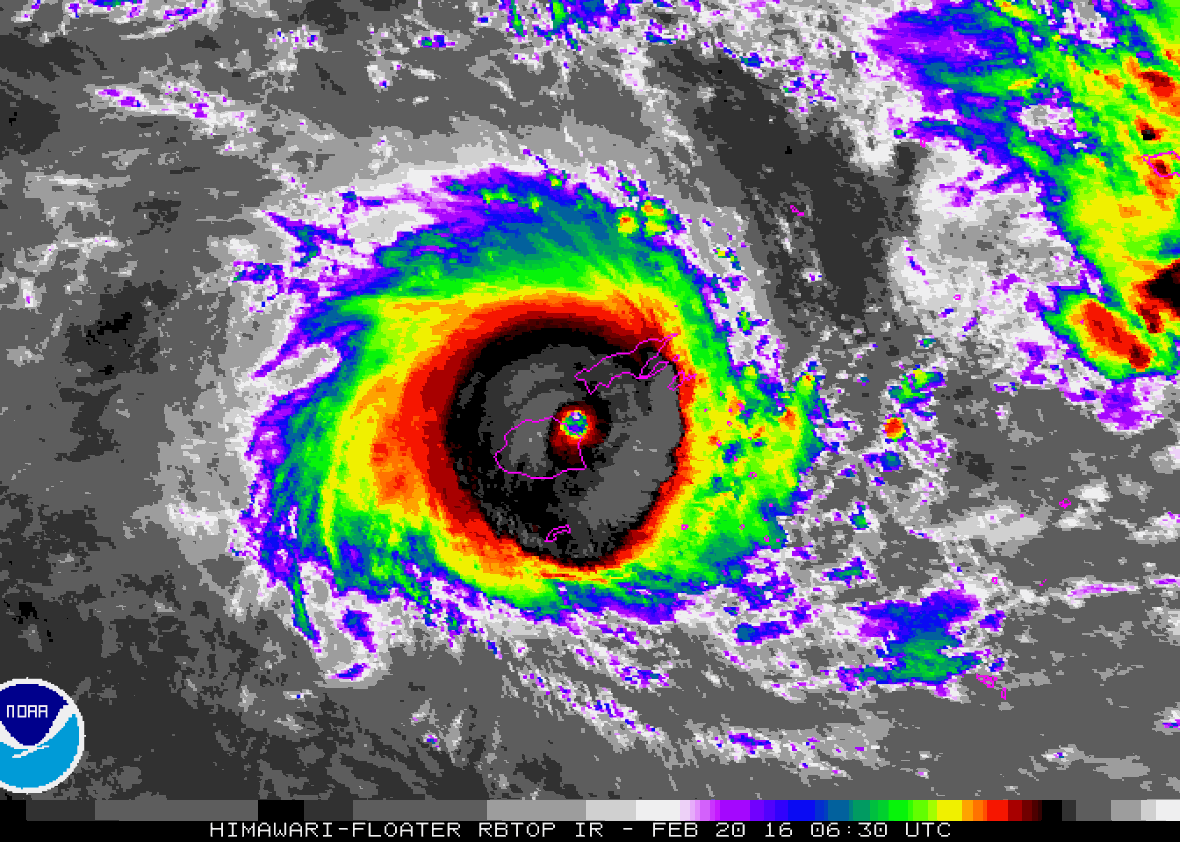One of the strongest storms ever measured on Earth just made a direct landfall in the South Pacific.
Cyclone Winston made landfall on Fiji’s main island, Viti Levu, late Saturday local time. The Fiji Meteorological Service estimated wind gusts near Winston’s center at around 200 mph—strong enough for Winston to be considered the strongest tropical cyclone ever measured in the Southern Hemisphere. Just prior to landfall, the Joint Typhoon Warning Center in Hawaii estimated Winston’s sustained winds at around 185 mph, based on satellite.
Fiji’s government has declared a “state of natural disaster” for the next 30 days to help deal with the storm and its expected aftermath. Video from Fiji taken hours before the worst conditions arrived showed trees and power lines bending under heavy winds, and there are initial reports from some Fijian villages of all houses destroyed:
Fiji’s prime minister, Voreqe Bainimarama, sent a heartbreaking and desperate message earlier Saturday urging his citizens to “finalize your own preparations to survive this terrible event” and calling the storm “an ordeal of the most grievous kind.” Internet-based weather reports from Fiji’s government were very slow to load and were relayed by the New Zealand Met Service. Power outages affected most of Fiji at the storm’s peak.
Meteorologist Bob Henson said that prior to landfall, Winston attained a “nearly ideal environment for intensification.” Exceptionally warm ocean temperatures egged on by a record-strength El Niño were a big reason why Winston was so strong. At one point, satellite-based intensity estimates of Winston were a perfect 8.0 on an 8.0 scale. Winston also took a very atypical track to arrive in Fiji, making landfall from the East—the opposite of the usual direction—which may have left residents unprepared, and amounts to a worst case scenario for the island chain.
Winston comes less than four months after Hurricane Patricia broke the Western Hemisphere strength record, and likely the Northern Hemisphere record as well. Patricia’s top sustained winds were estimated at 215 mph based on an extrapolation from U.S. research aircraft flying through the storm. Winston and other recent super intense Pacific storms, like Haiyan which made landfall in the Philippines in 2013, didn’t have that sort of direct measurement.
Ironically, earlier this week, Fiji became the first country in the world to formally ratify the Paris agreement on climate change, which commits its signatories to reducing emissions. The country plans to move entirely to renewable energy within the next 15 years, contingent on outside aid. Fiji is responsible for just 0.04 percent of global greenhouse gas emissions, and the confluence of this week’s events there highlights the brutal injustice posed by a warming world.
Winston will almost certainly make life harder for Fijians already struggling to adapt to rising sea levels and climate change. In 2014, the village of Vunidogoloa was relocated to higher ground under the country’s climate change program, and 34 other villages are also set to move in the coming years.
